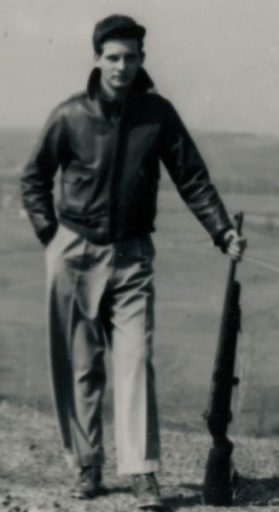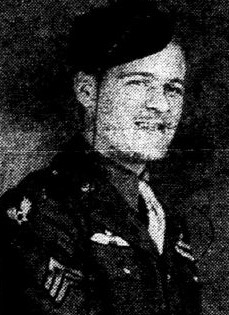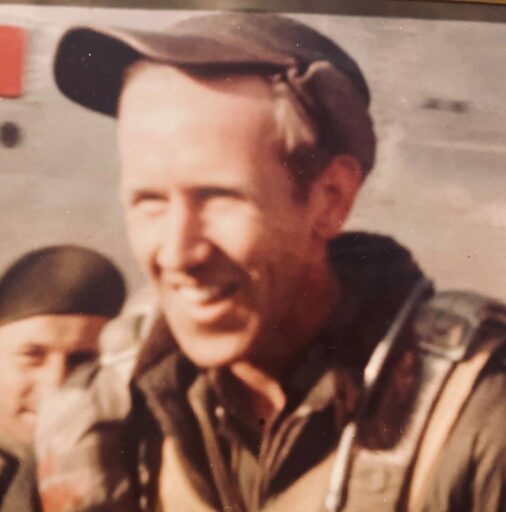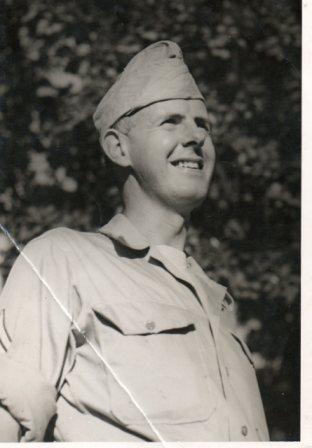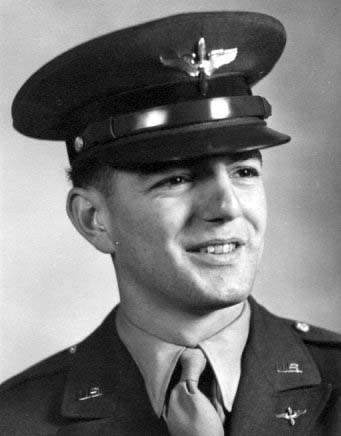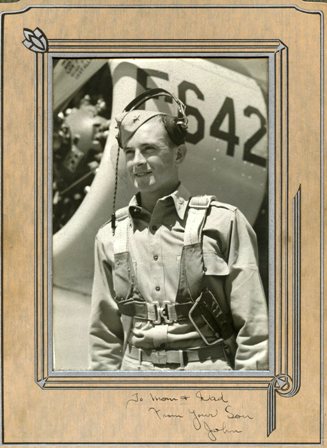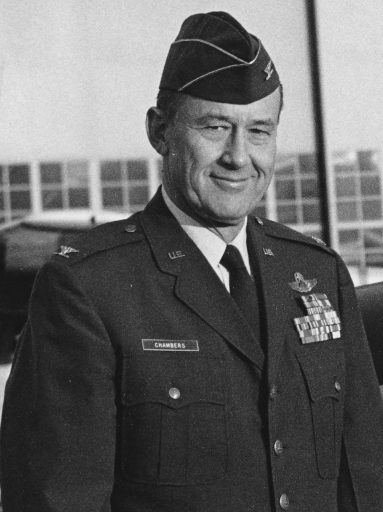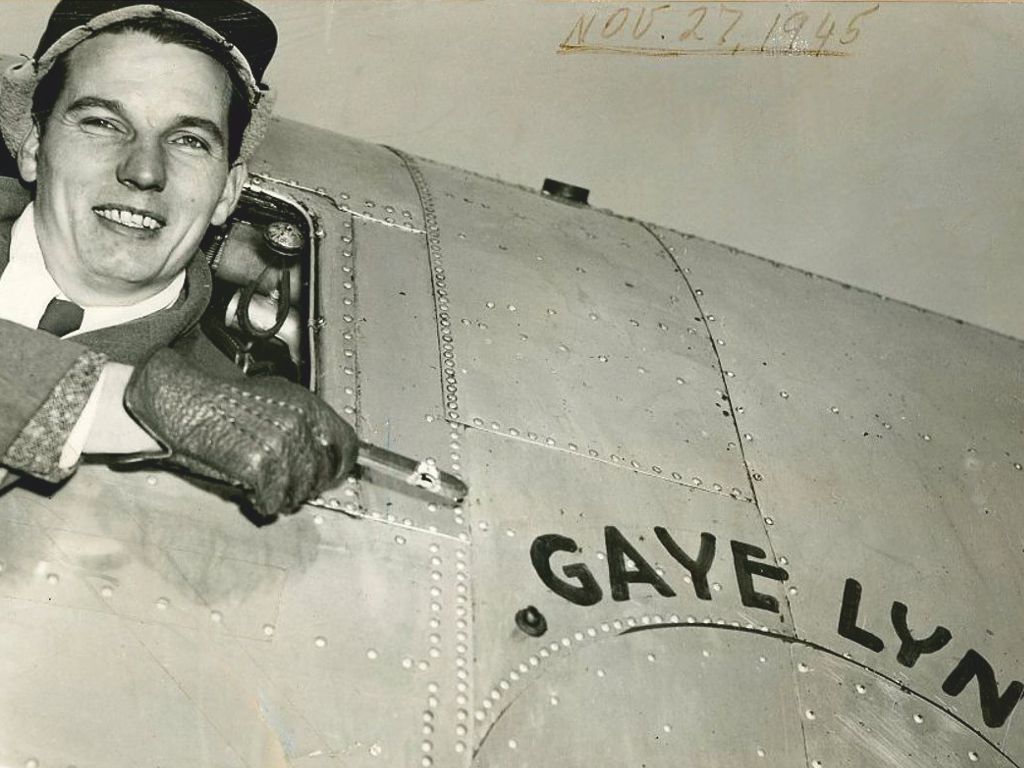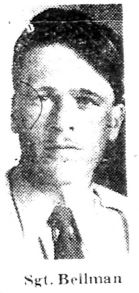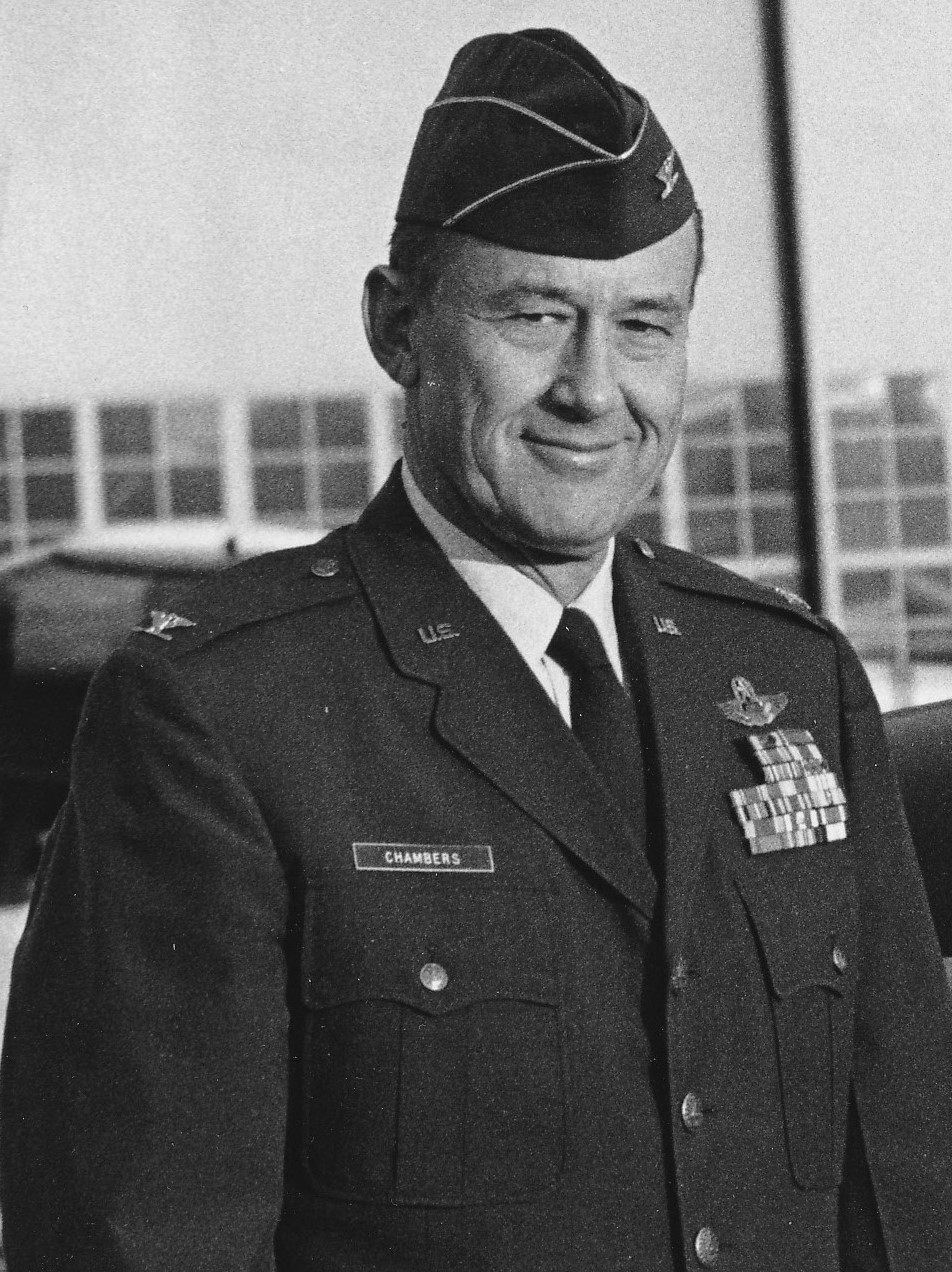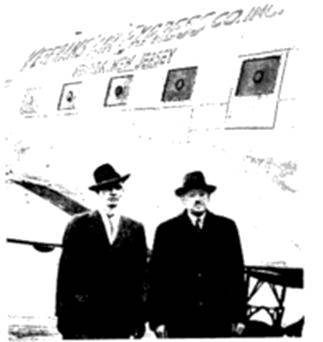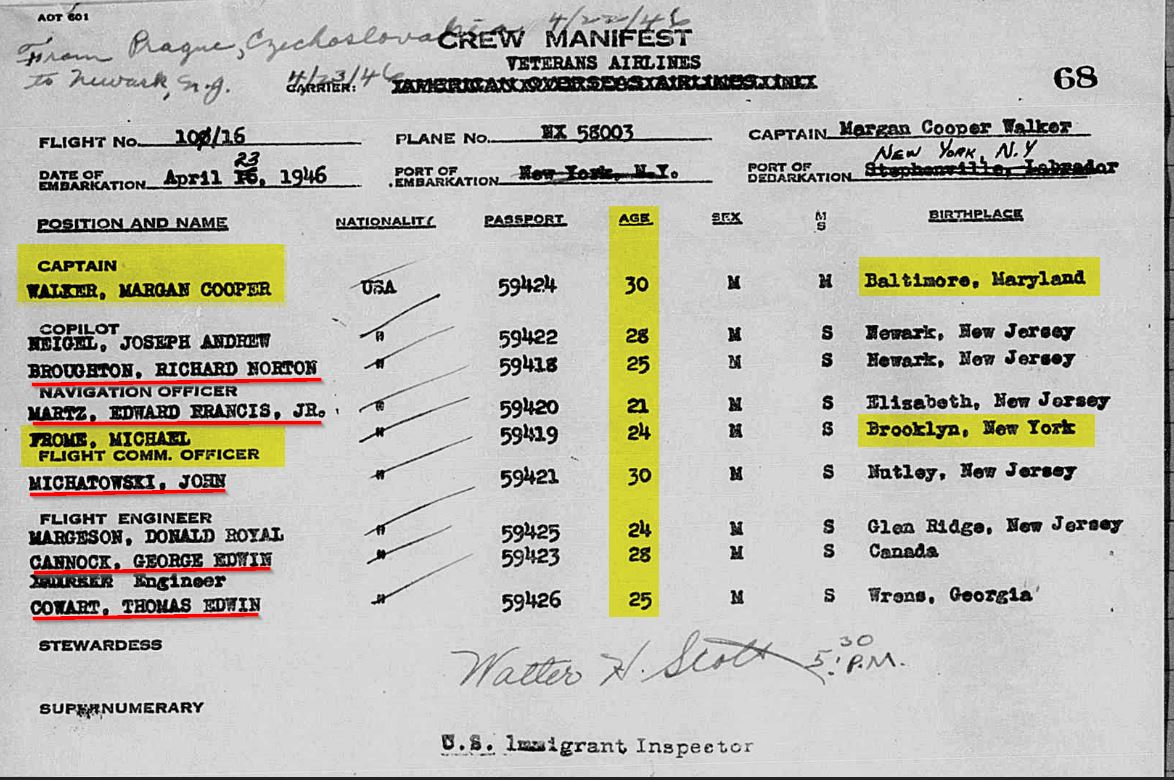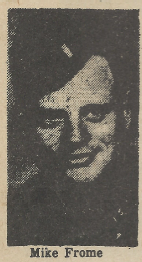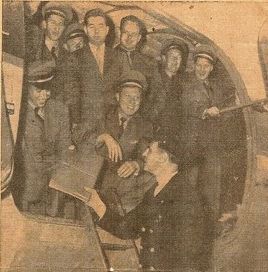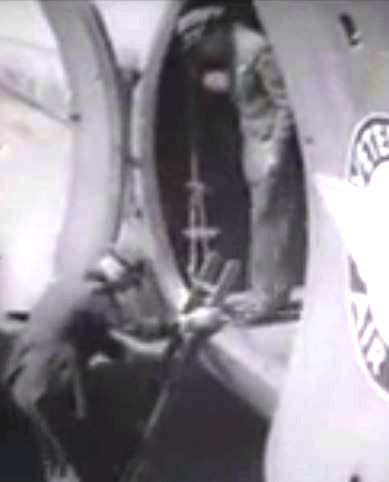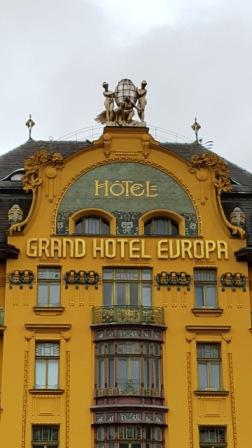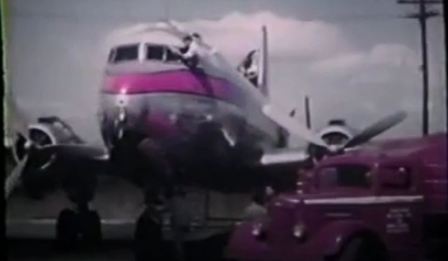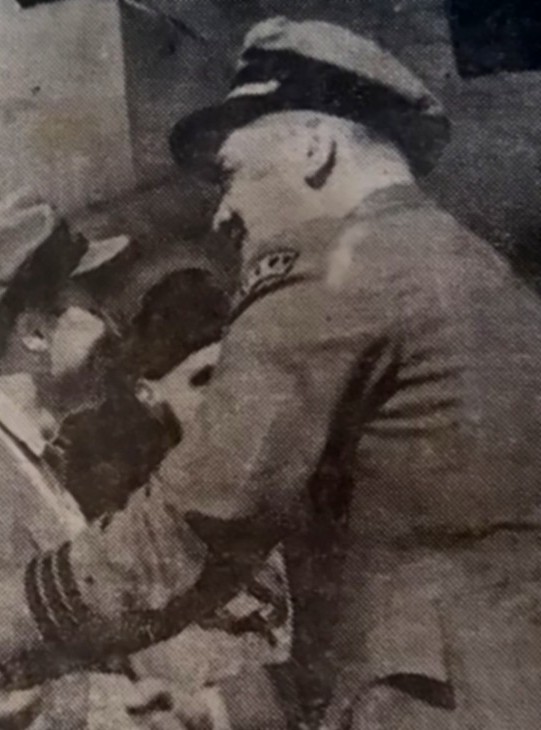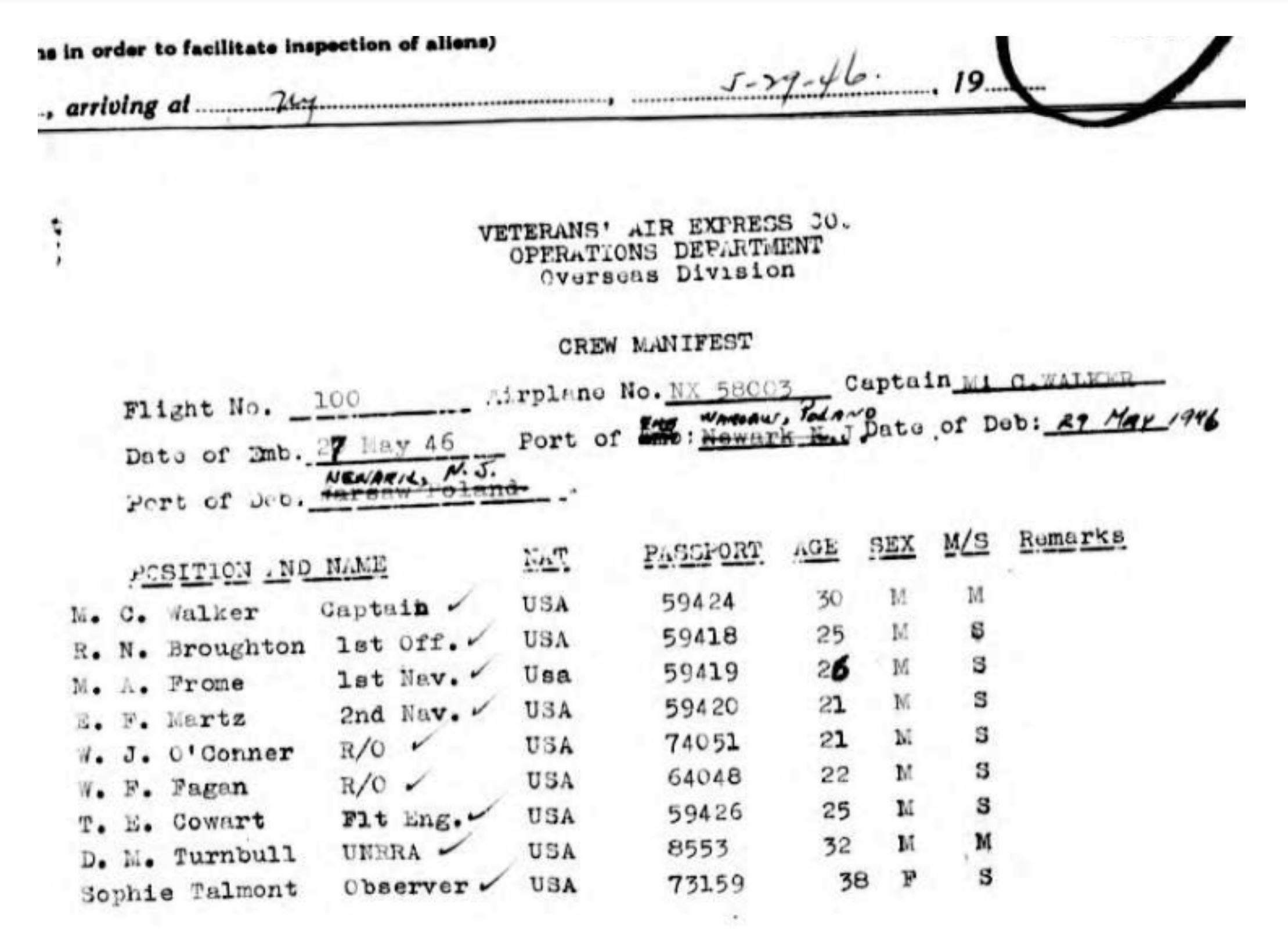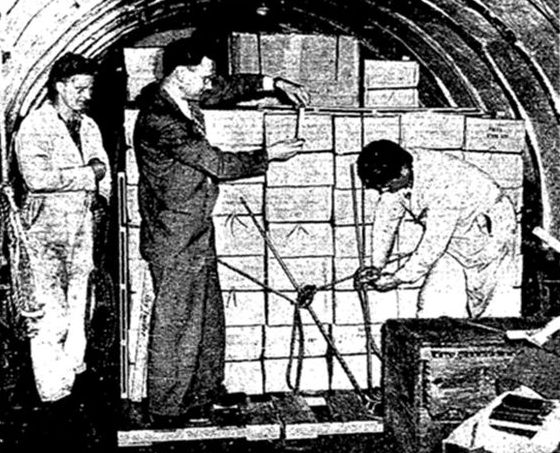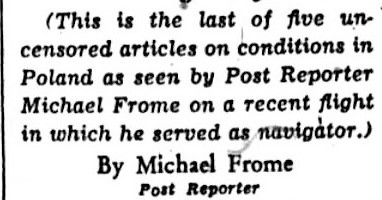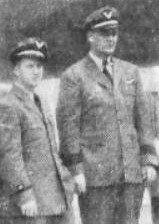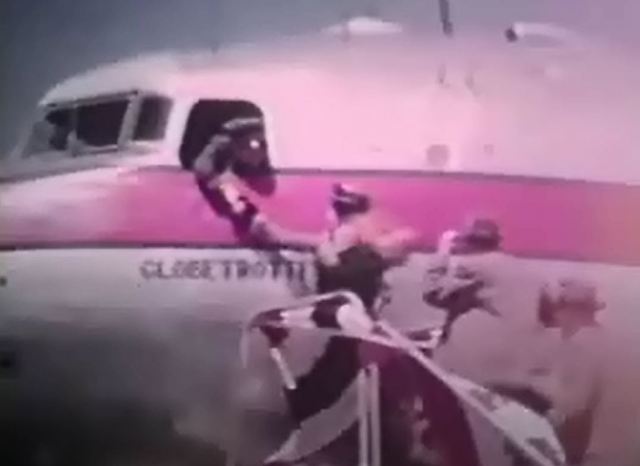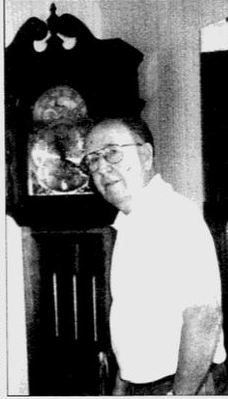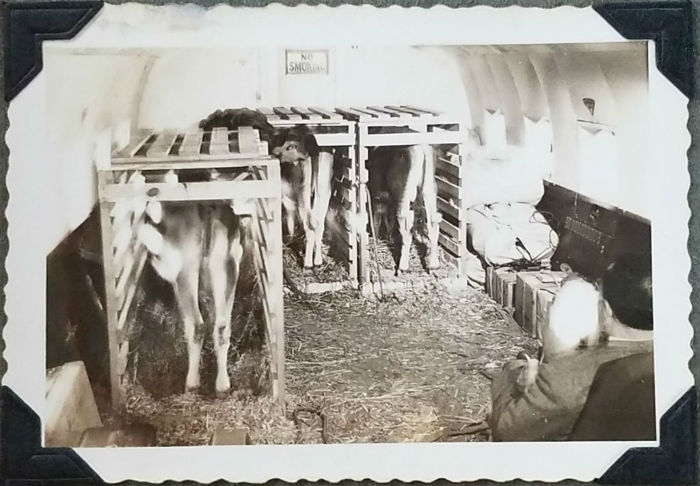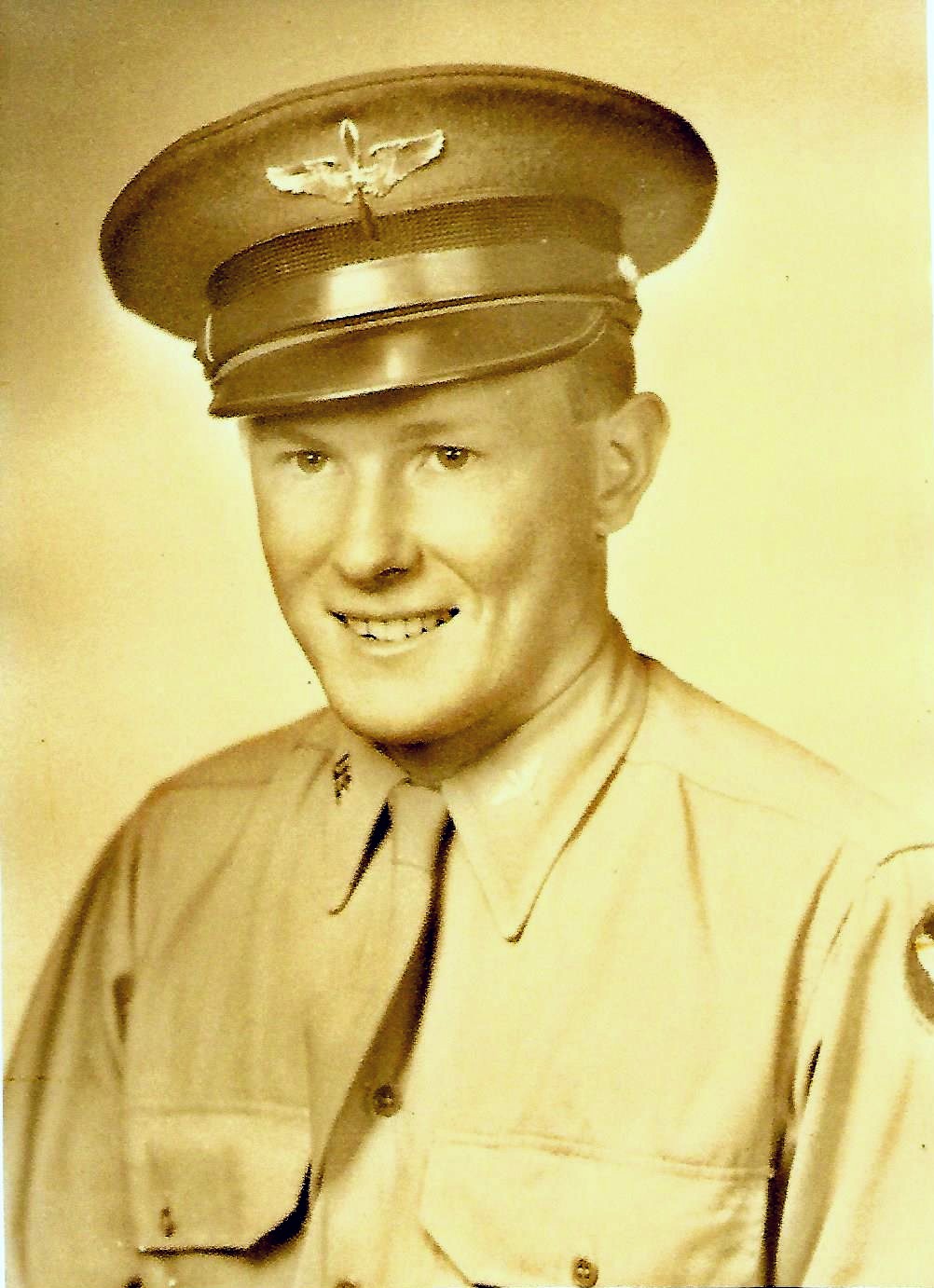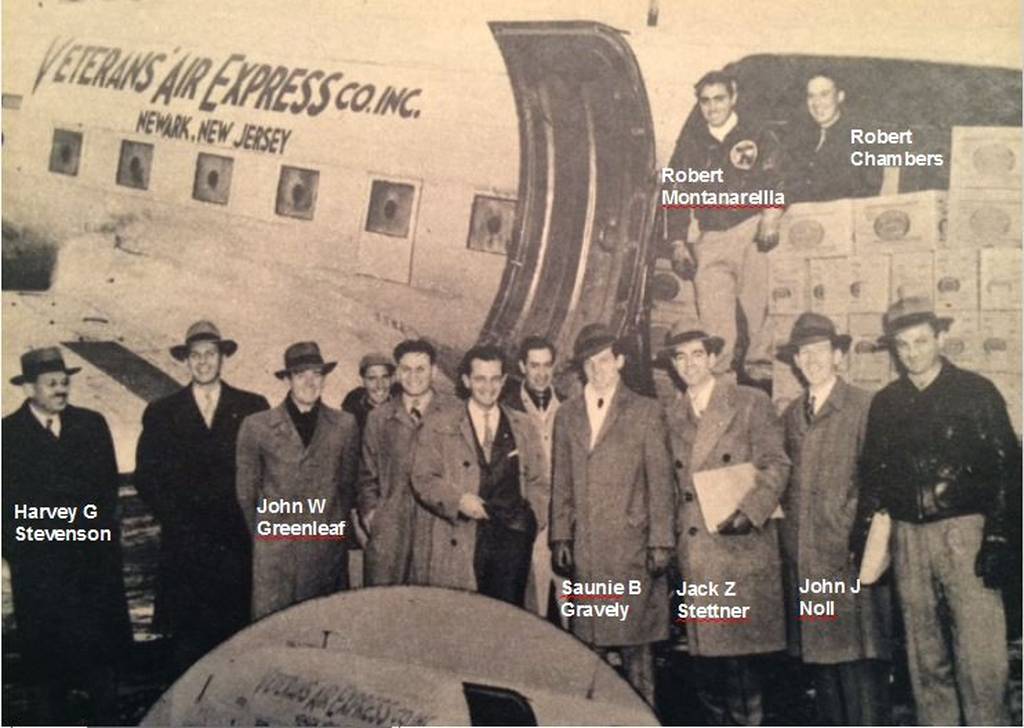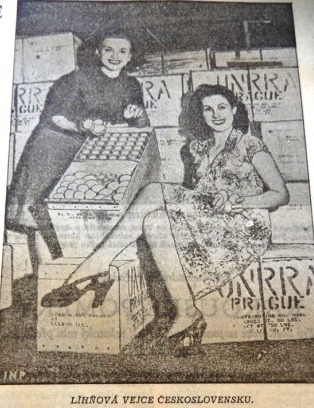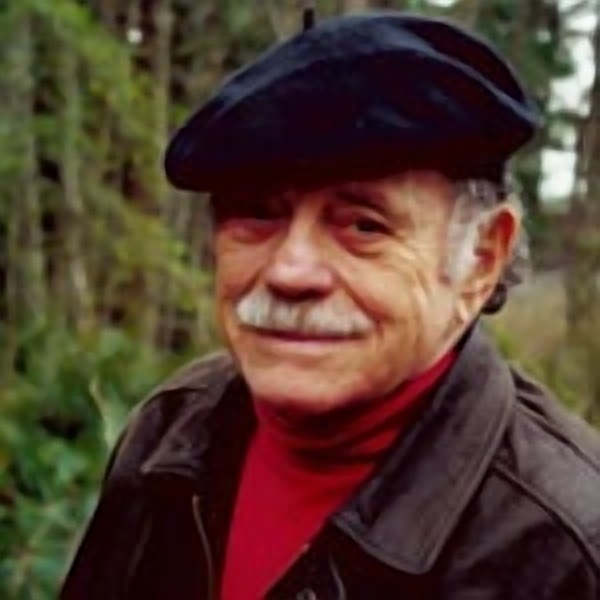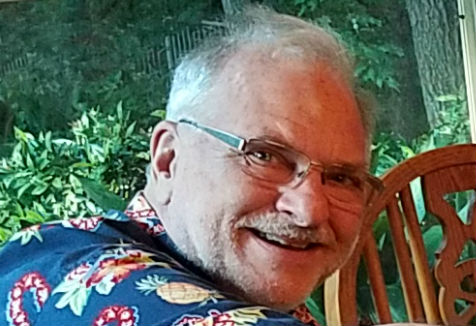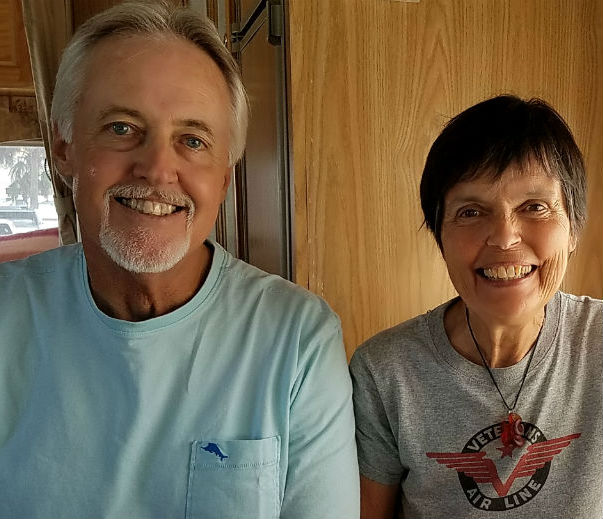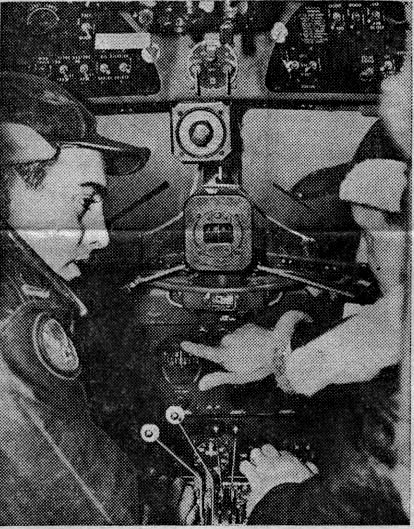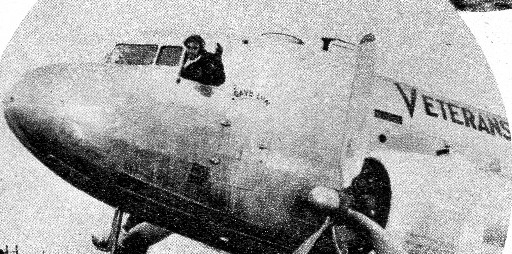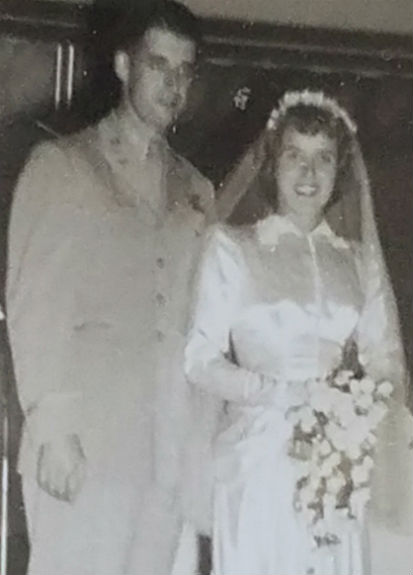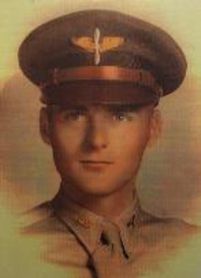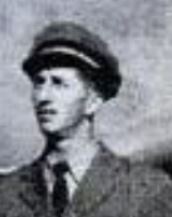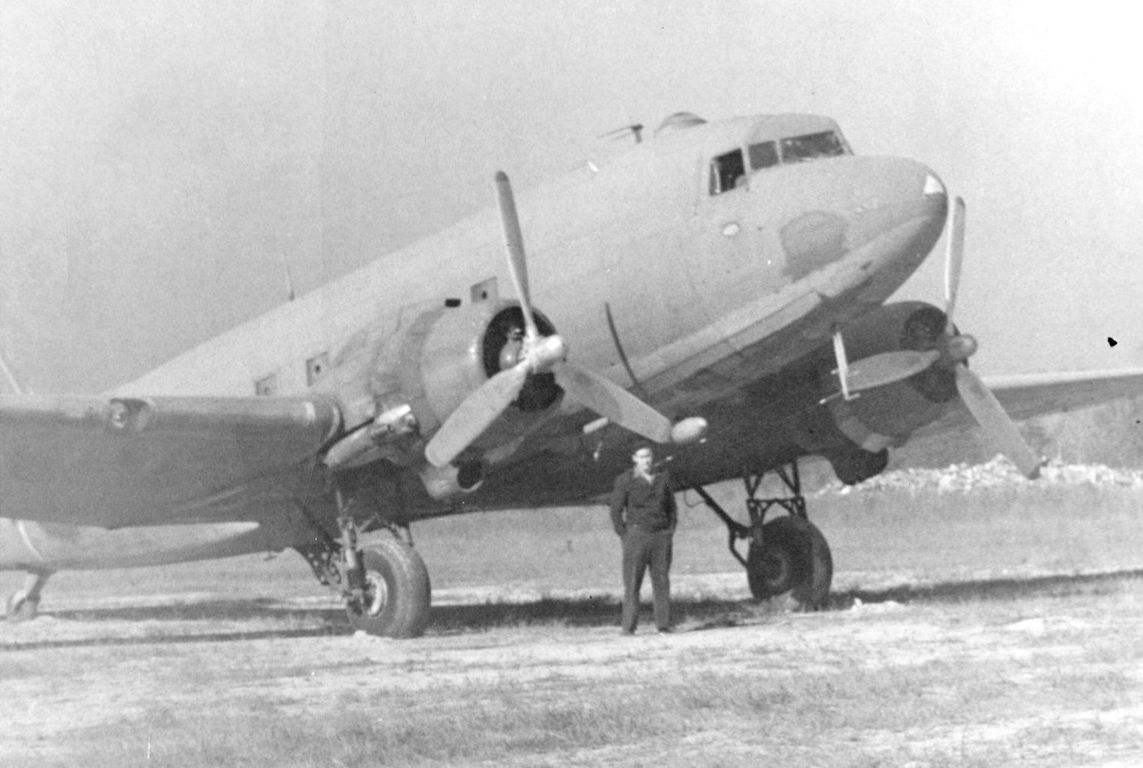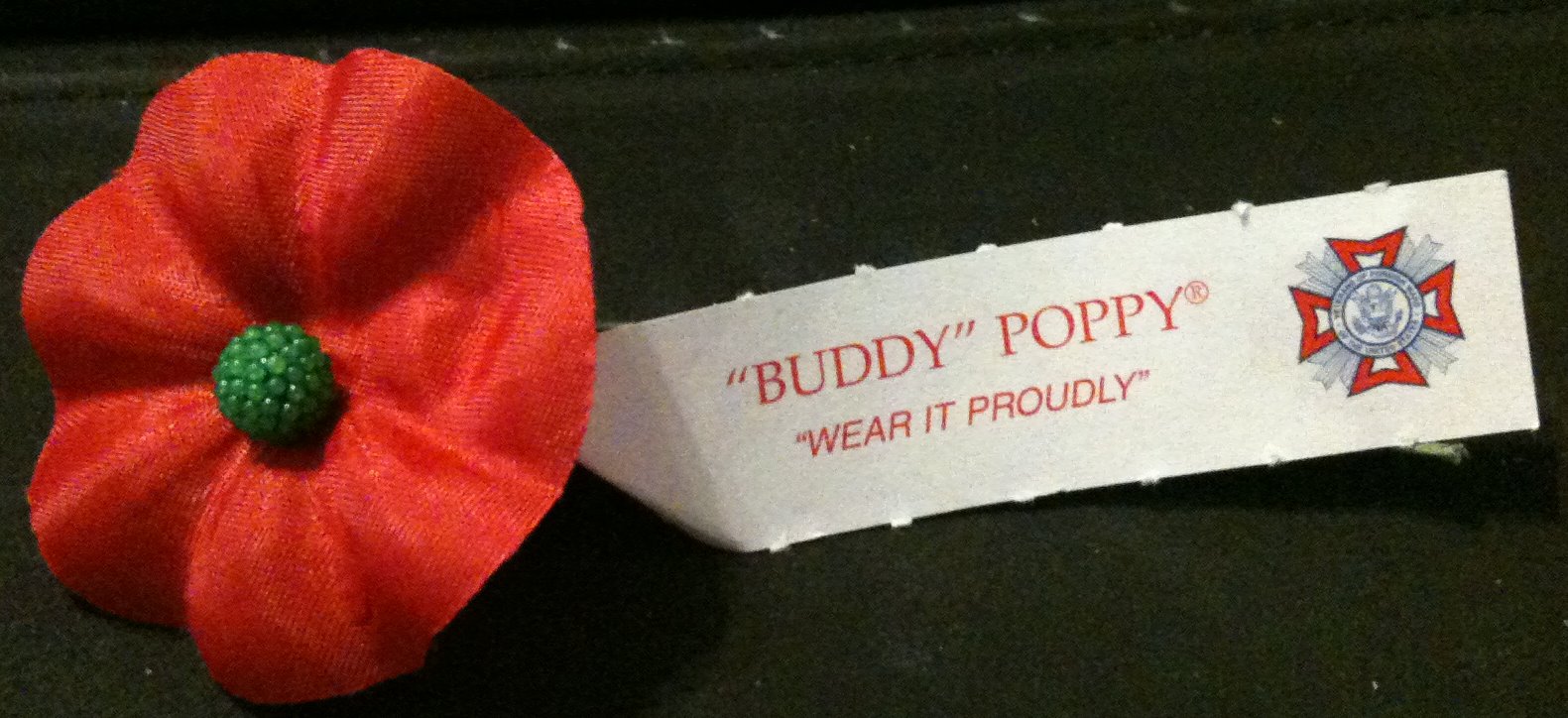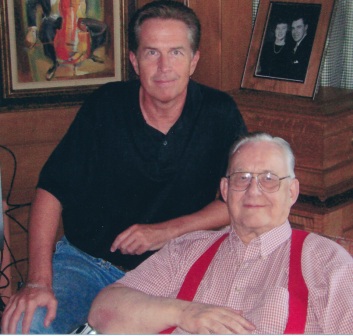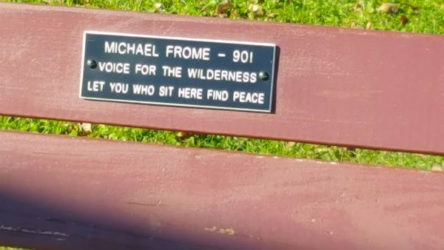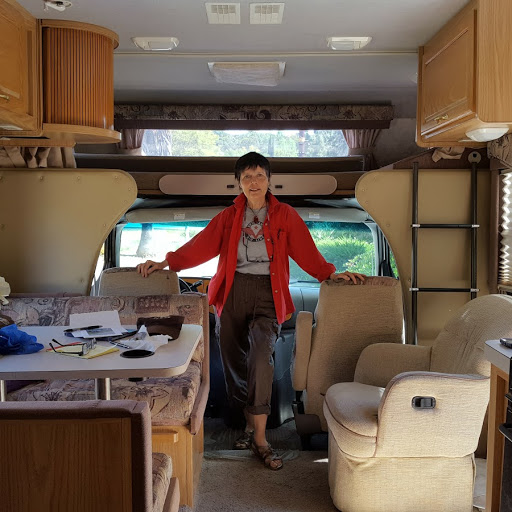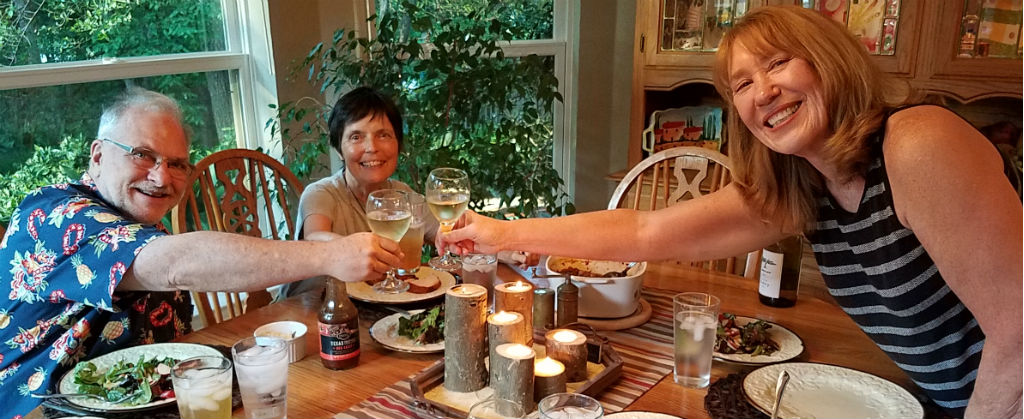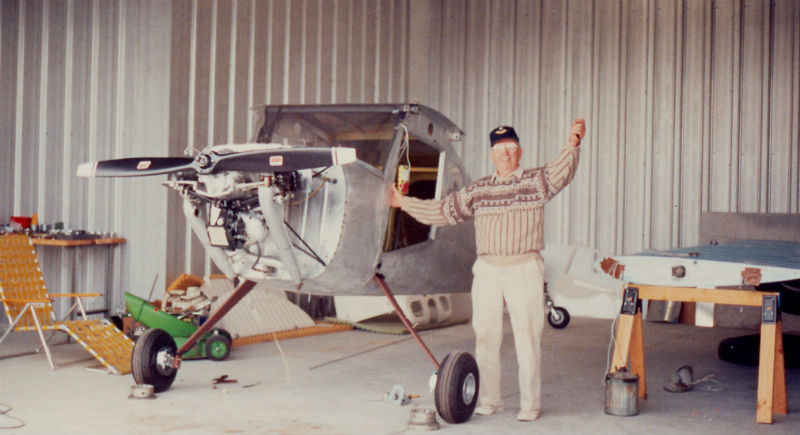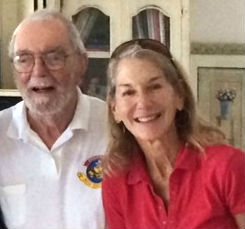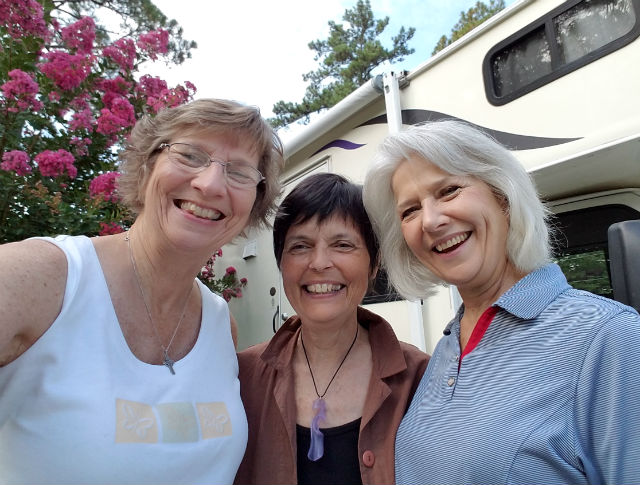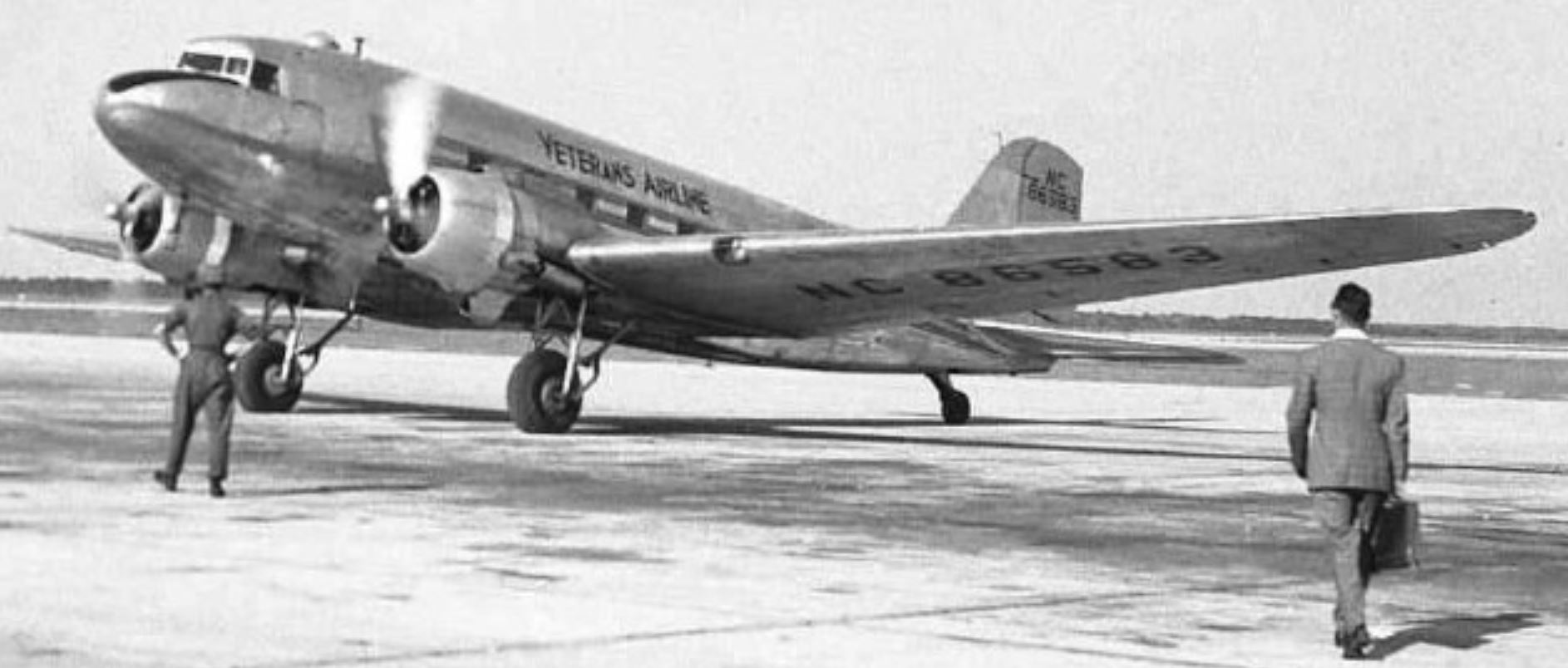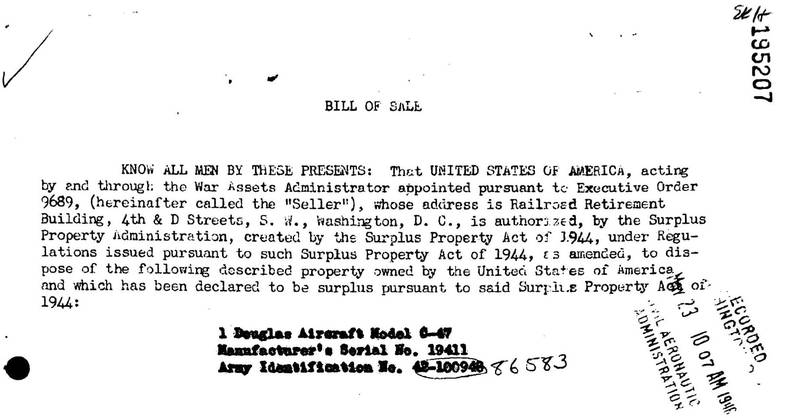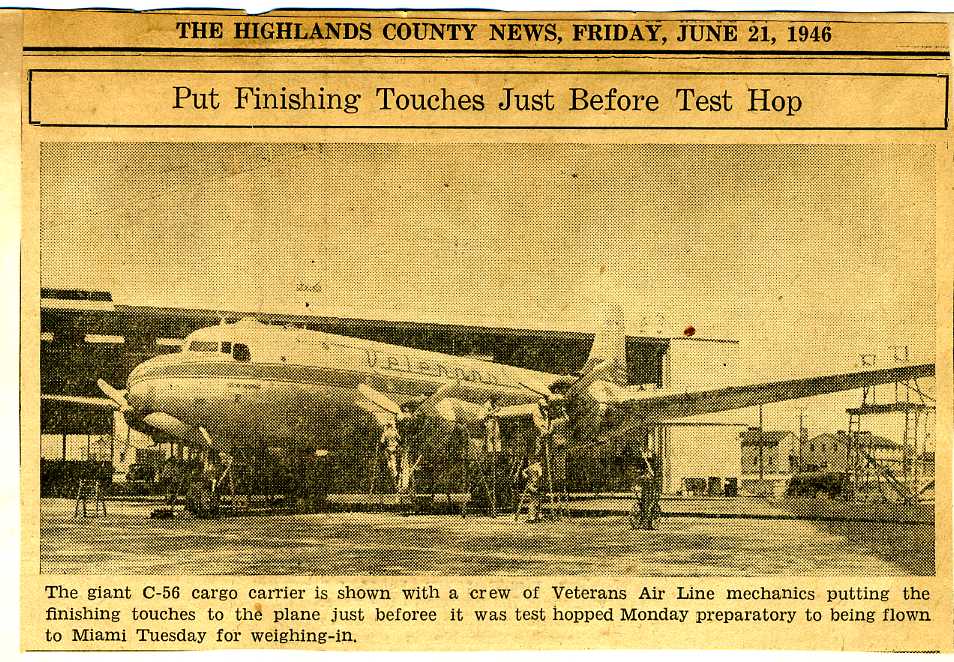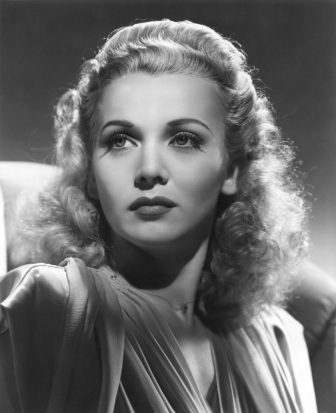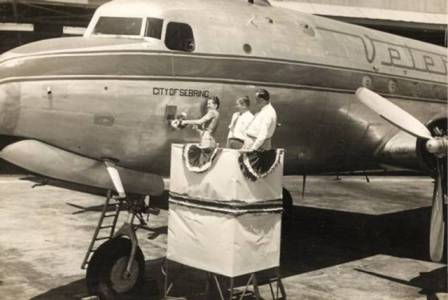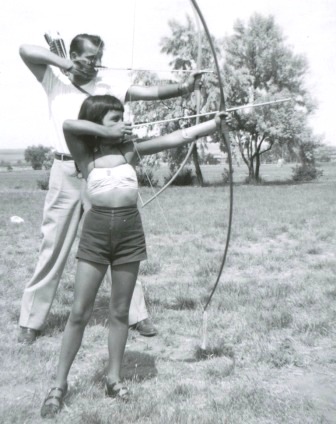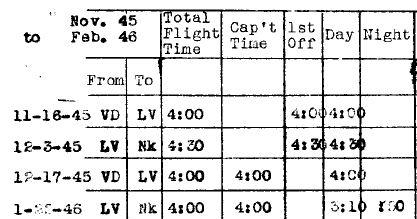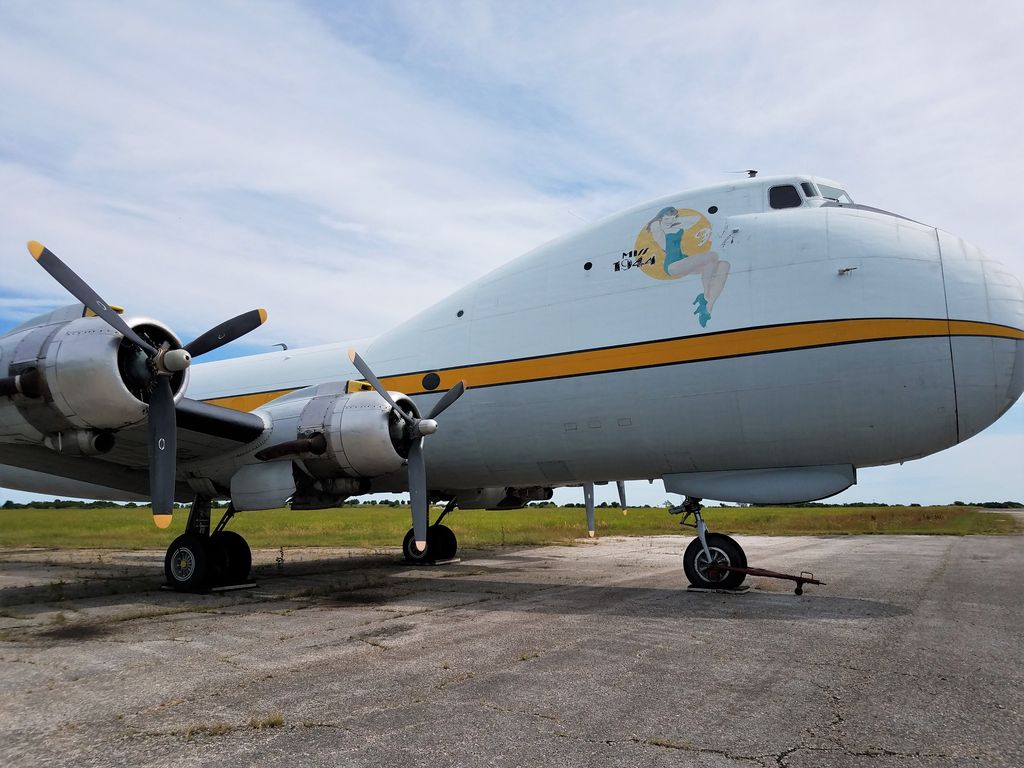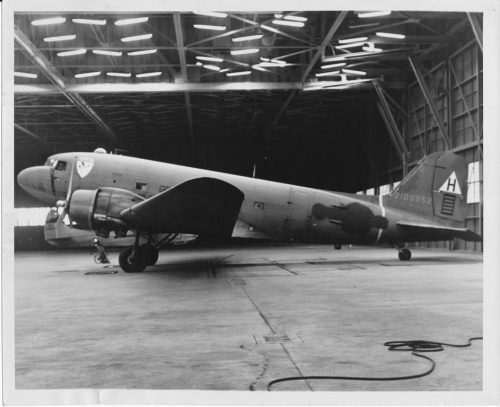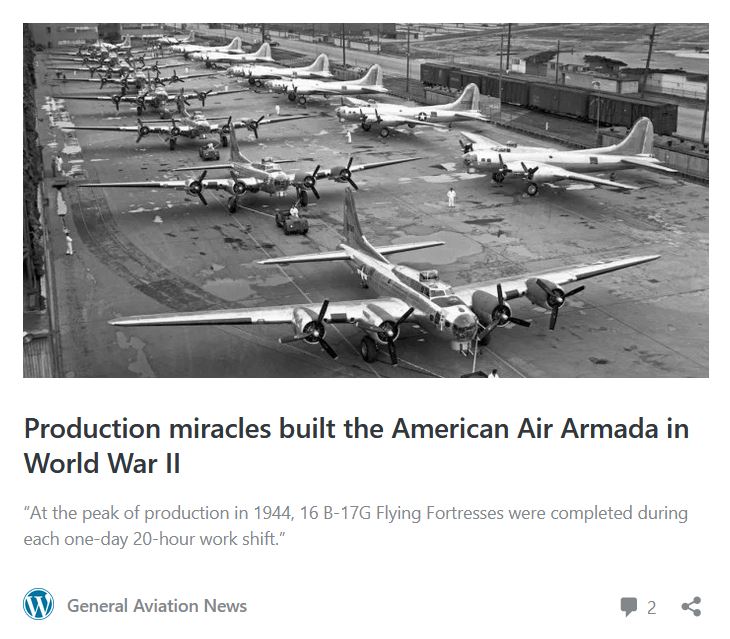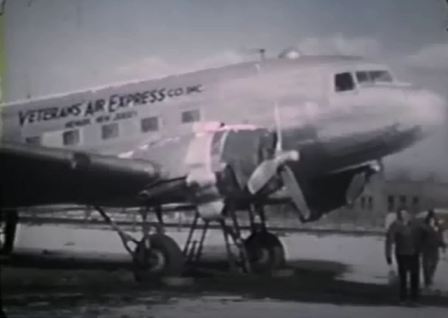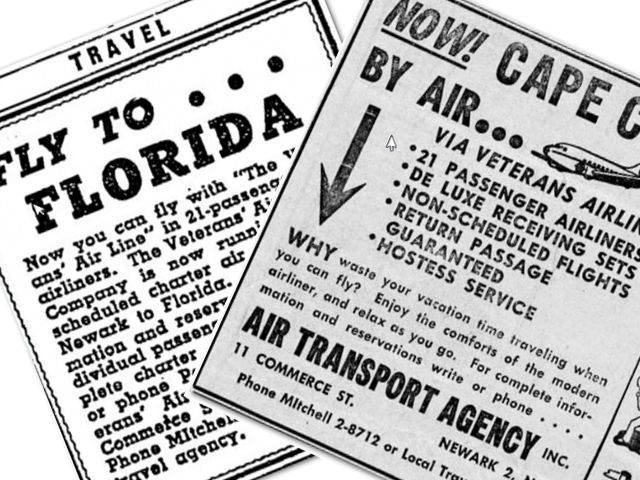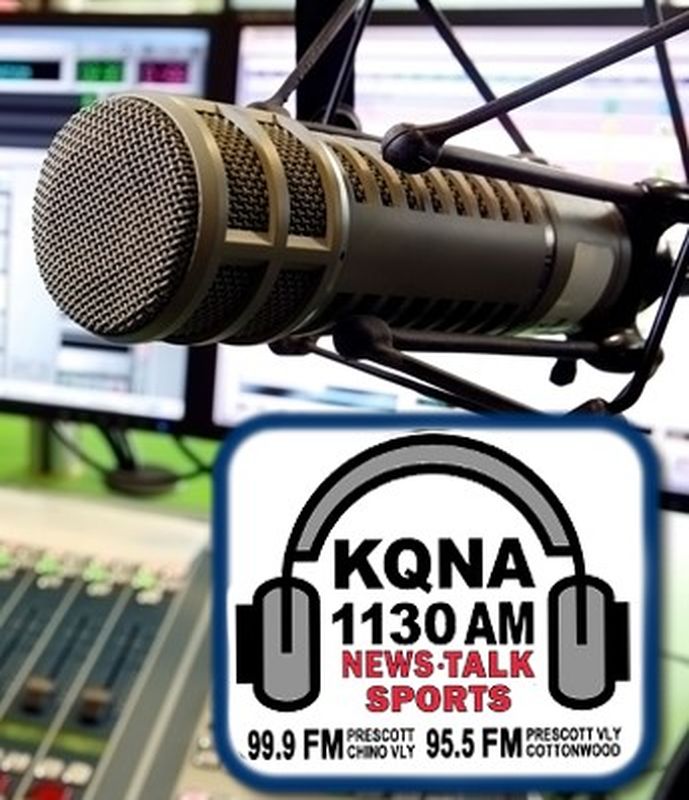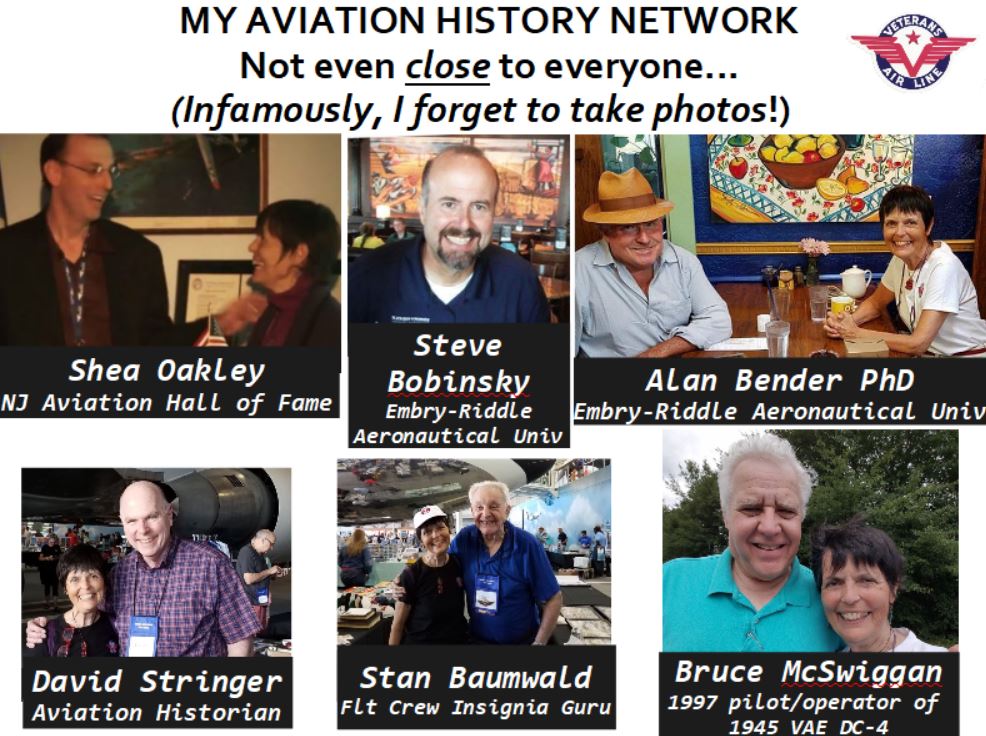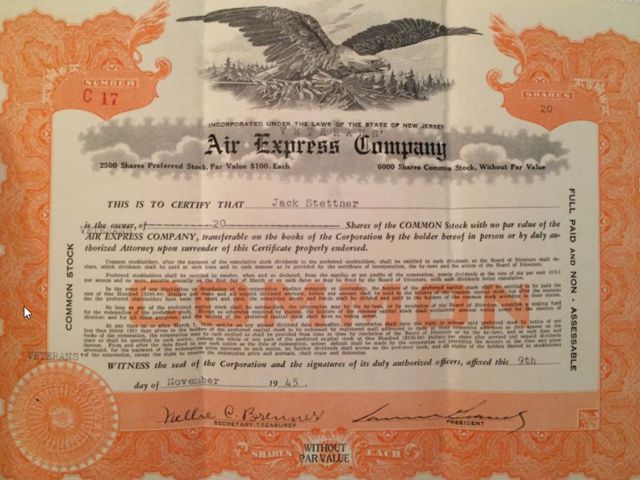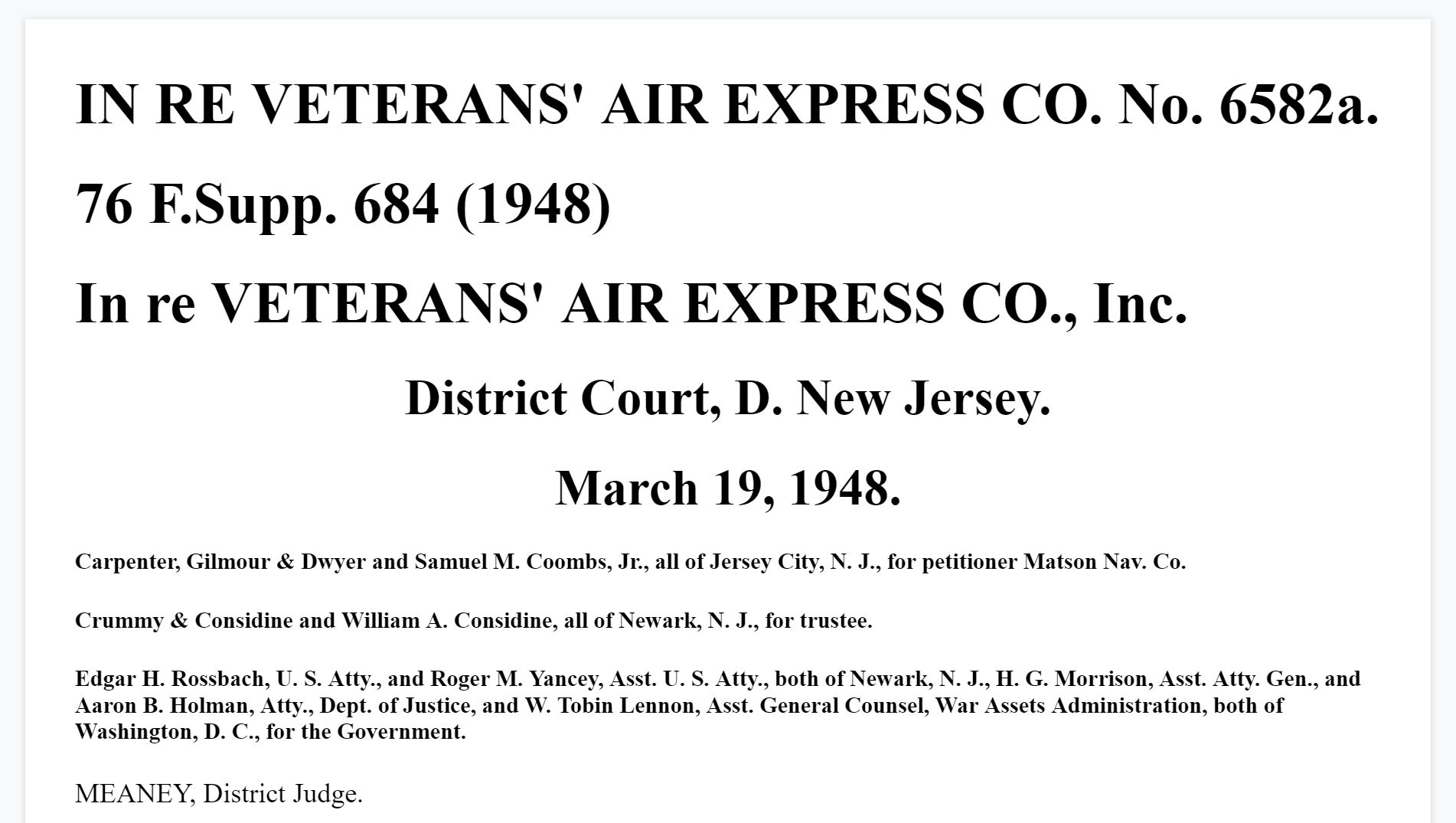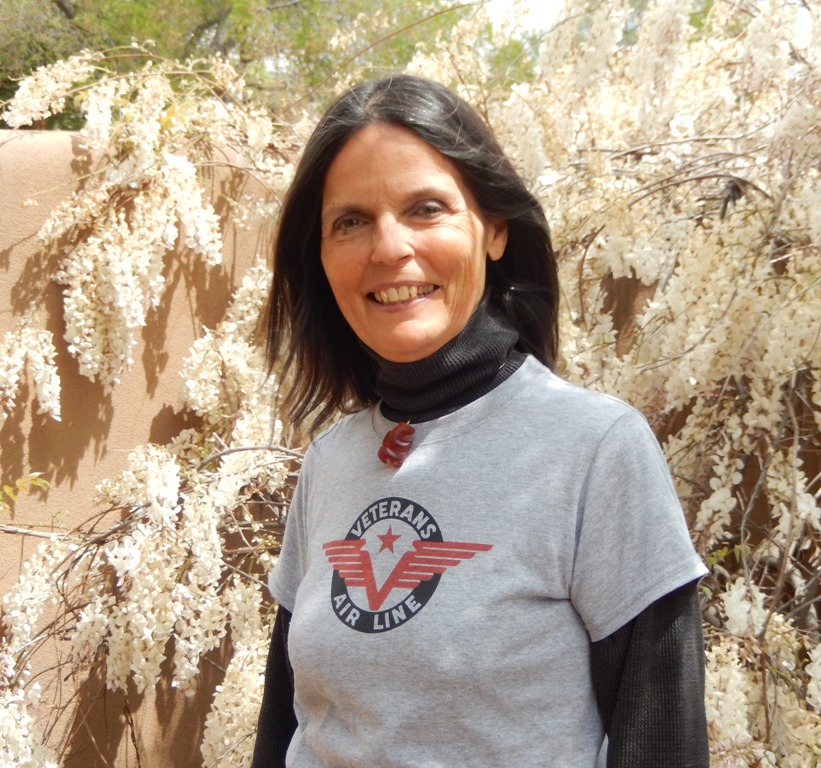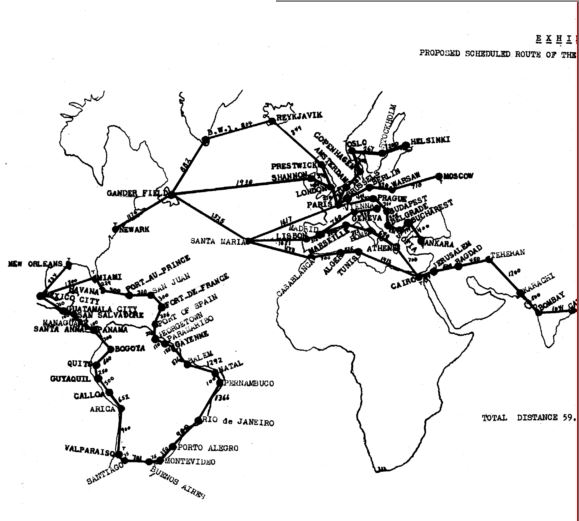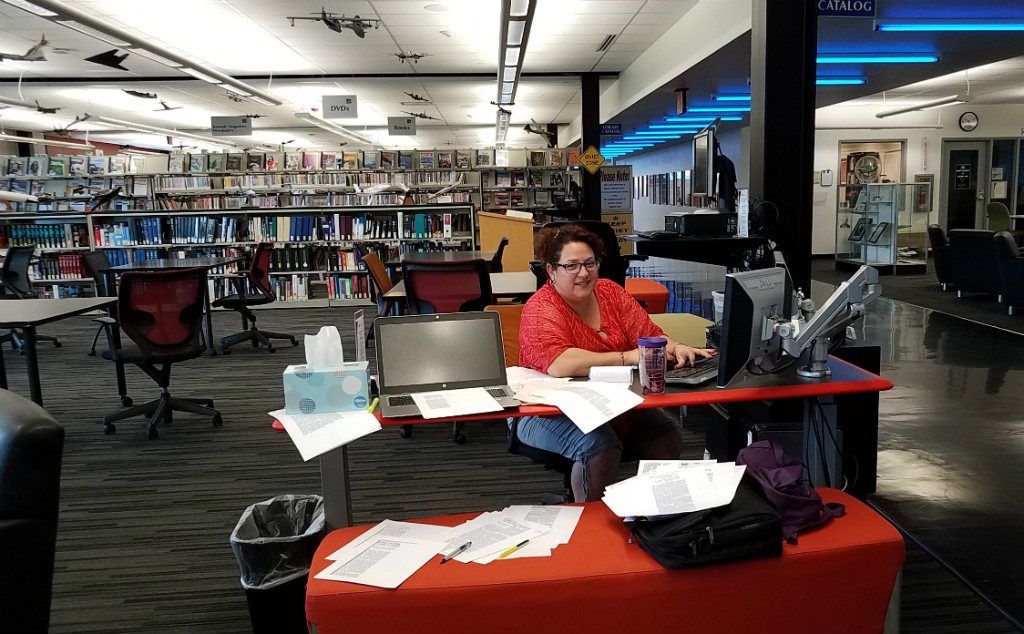VETERANS AIR 1945
What makes this story worth telling?
When he was 22 years old and recently honorably discharged from the Army Air Forces, Saunie Gravely began to conjure a business. Surplus war birds, unemployed WWII vets like himself, and something about air transport of fresh produce. Never short on ideas and enthusiasm, Gravely engaged decorated veterans who greatly outranked him, and most with considerably more aviation experience, but each eager to help, to start a contract, non-sked air service. Cargo and passengers. Veterans Air Express and Veterans Air Line – sister companies. No one pulled rank. Just their own weight. Plus got to doing whatever needed done. Which, for this fledgling 1945 company, could cover lots of uncharted territory.
From mid-1945 through 1946-ish.
Doesn’t sound like much duration, does it? But you can bet it felt monumental to this all-Veterans organization and the civilian board members and finance folks. They marshaled many moving parts (no pun intended) into a cargo and passenger service that operated domestic and international flights. They grew to 100 employees by July 1946.
The duration of the company’s existence is of little consequence compared to the accomplishment that it existed at all! Yes, they all brought invaluable aviation experience to this endeavor…but, as I learned during my research and witnessed first hand as well…they each brought their character and spirit. The “real stuff” that materialized Saunie Gravely’s dream.
Speaking of Saunie, this Editor/Researcher must make a disclaimer. Saunie is my Dad!
THE UNFOLDING STORY…as of today!
Chronology is not a researcher’s luxury.
Pieces of the puzzle. Time-dated.
Findings presented here surfaced randomly, in eclectic sequence, and oftentimes are contrary to “confirmed” information. Thus, much research remains…even as the gathered discoveries simultaneously beg to be told. In order to unfold as coherent a story for you as possible, time segments below contain “told to me” and “found” data of pertinent events. They begin with a personally important event in 1943 and travel through Early 1948..with much more to come. [The Air Mail stamps? They are just handsome graphics. But, yes, they also are all DC-4s.]
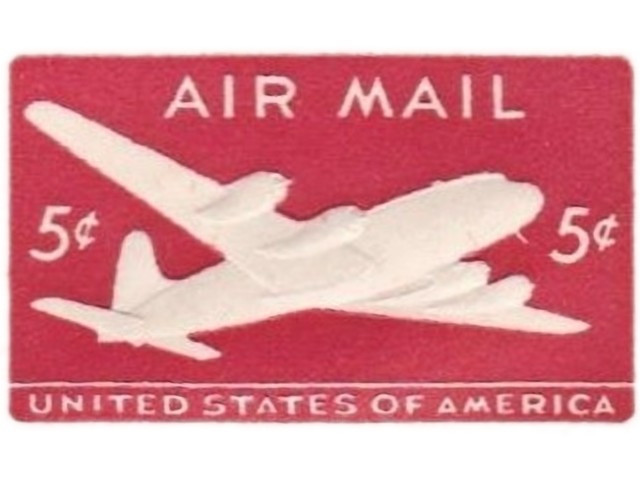
1943 to 1945
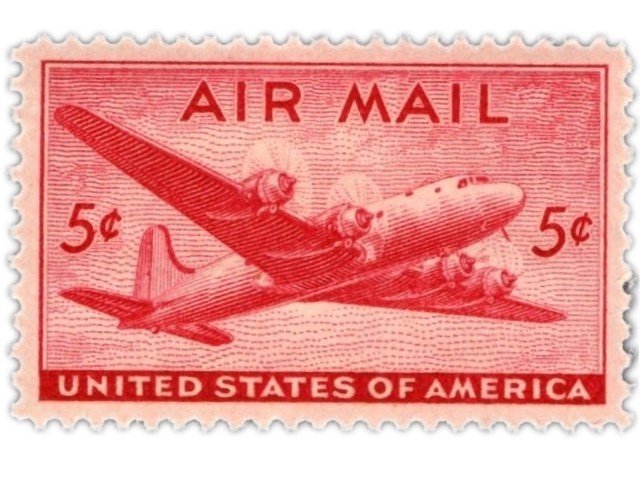
Early 1946
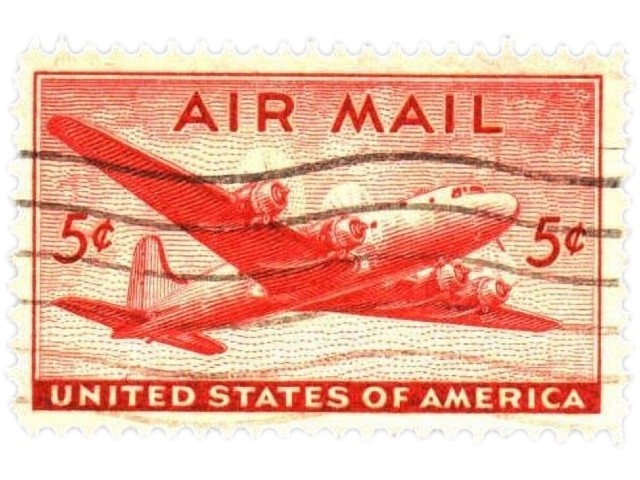
Late 1946
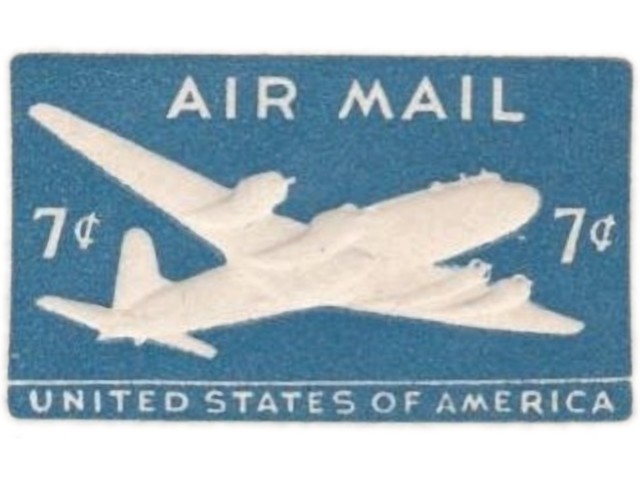
1947 to 1948
FACE-TO-FACE!
Made the story absolutely irresistible.
It started with Jack Stettner
At the outset in 2015, it never occurred to me that much of an actual Veterans Air story would unfold from my poking around. But the biggest surprise? The unimaginable surprise? The possibility that I would be in touch with! or actually meet! any of my Dad’s people? Never happen!
Until it did!
Only three months into research, on July 25, 2015, I found and spoke with Jack Z. Stettner. Jack was a Veterans Air Express co-founder, stockholder, international & domestic pilot, and operations manager. On the same day I spoke with Jack, I also spoke with and emailed his daughter, Ellen, and his two sons, Scott and Al…the “Veterans Air kids” like me. Until that encounter, the possibility of any such contact never crossed my mind!
Jack Stettner was a stunning, joyous revelation. He provided irresistible motivation for me to continue my research.
Turns out, Jack Stettner was the first of five!
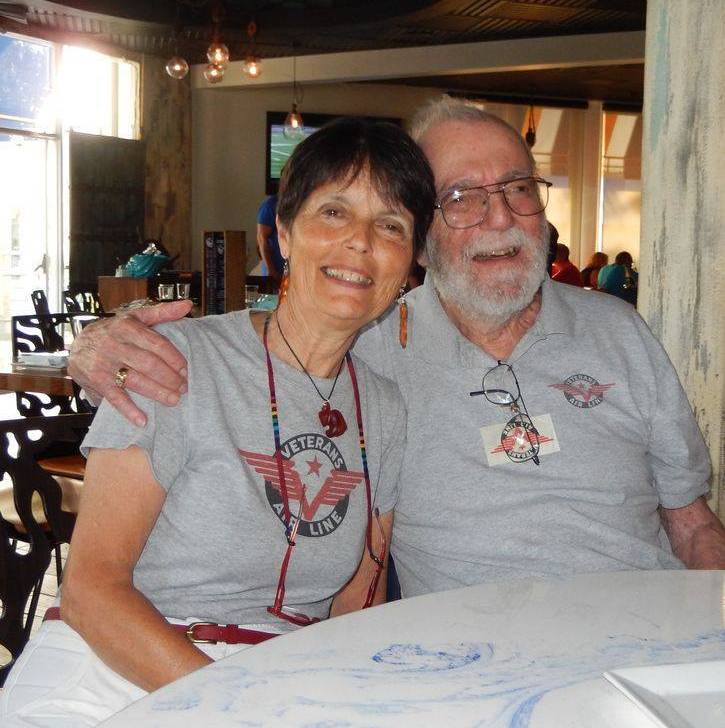
Jack Stettner
Core Founder
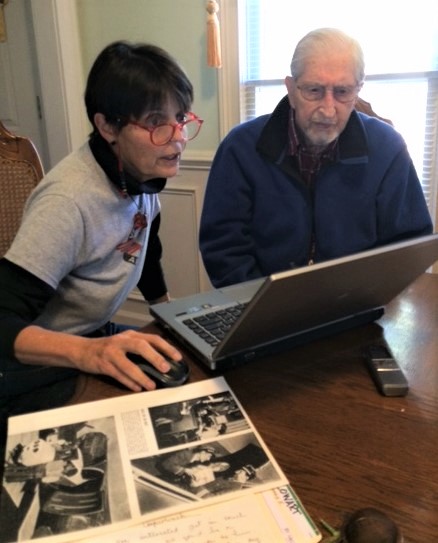
Thomas Cowart
DC-4 Flt. Engineer
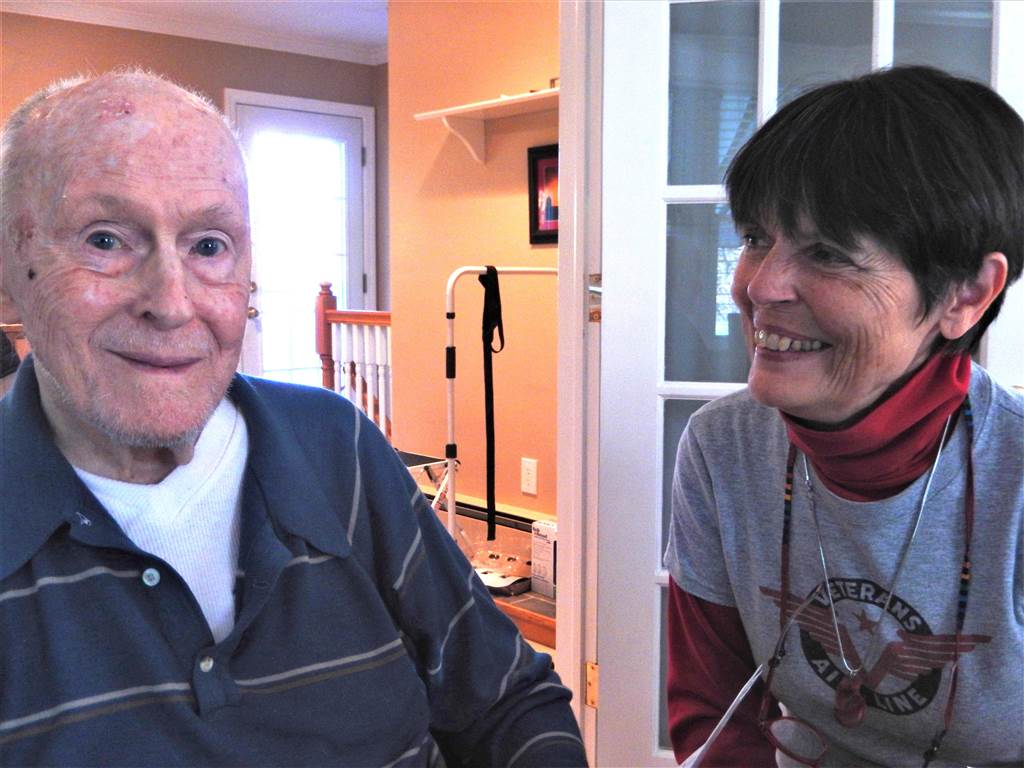
Edward Martz
DC-4 Navigator
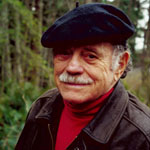
Michael Frome
DC-4 Navigator
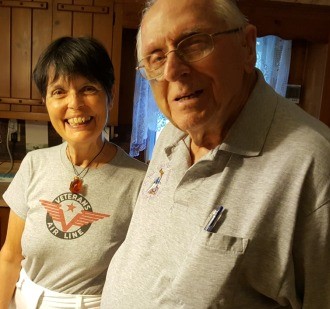
John Schaus
DC-3 Pilot
Next came Thomas Cowart and Edward Martz. Then Michael Frome and John Schaus.
Scroll over to meet them here. Each of their stories unfolds as you explore our website! Lots to tell.
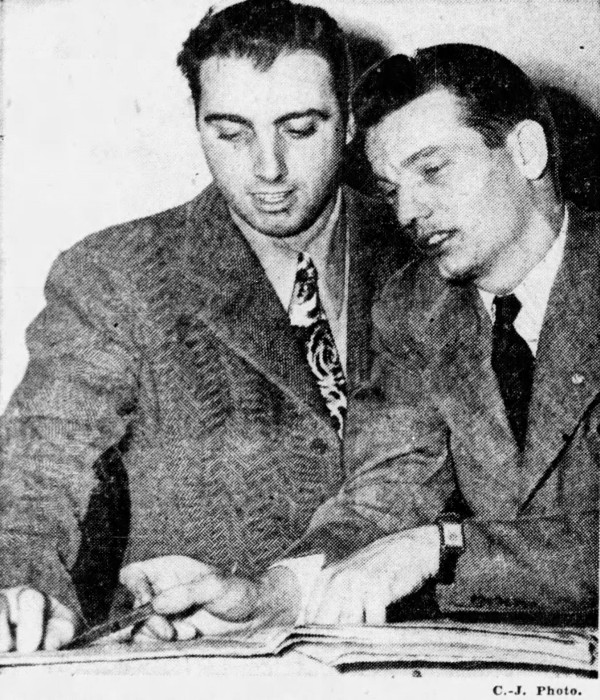
VETERANS AIR FOUNDERS
Just idle curiosity to “find out something” about Dad’s tales.
FOUNDERS
Idle curiosity to locate “something about” the tales my Dad told when I was a child, turned into a considerable collection of information. Material that requires management and order. Intrigued by so many seemingly unrelated pieces of the puzzle that began to surface, I was discovering even more data sources totally foreign to me. And learning to mine them for Founders, Board of Directors, Crews, Aircraft, Routes, Legalities. All of them intriguing rabbit holes!
John Noll was one of the known core Founders. From John’s narration (many years later) of a video he shot in 1946, and from a few press stories, we learn that seven men co-founded Veterans Air. Saunie plus six. You’ll meet all seven founders below.
Actually, Dear Reader, I’ve carefully exercised Researcher privilege here and added an eighth Founder. Based upon when Gordon E. Bellman joined Veterans, but more influenced by the depth of his involvement, I believe you will agree with my decision.
Gaye Lyn
Deep vacuum of documents
Despite having identified these Founders, a deep research vacuum exists. Absolutely no “working” documents have surfaced. Not yet. Only stock certificates because Veterans Air Express Co. went public. Civil Aeronautics Board documents (must) exist…and are being sought. Certainly State of New Jersey documents of Incorporation exist. They were referenced for establishing the business in Florida and New York. But none have been located. These missing pieces help remind me that this is, indeed, still an unfolding history.
Saunie Gravely. Founder.
Gordon E Bellman. Core Founder. In full swing.
John J Noll among Core Founders
Charles Eason Core Founder. Non-aviator.
Robert F. Gries. Core Founder. Navigator. Manager.
Core founder Jack Z. Stettner. Stockholder. Pilot. Ops Mgr.
Core founder John W. Greenleaf, Sr. discovered by the “III”
Robert C Chambers. Core Founder. On the Board.
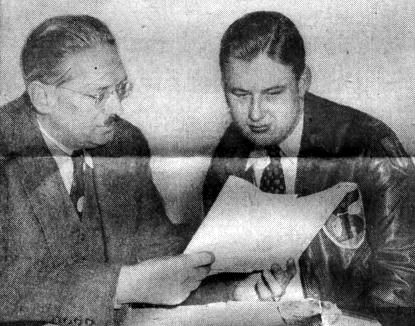
BOARD OF DIRECTORS & INVESTORS
The Founders and Crews wanted to control their own destiny.
BOARD OF DIRECTORS and INVESTORS
The Board, mostly “civilians,” are slightly easier to identify because they are named in various news clips.
They include Saunie B. Gravely as President and Chairman, Arthur Brenner (local produce dealer), Gordon Bellman (a combat flying veteran who had served with both the RAF and AAF), W. Thaddeus Rowland (local insurance man), Robert C. Chambers (AAF veteran and the company’s DC-3 Chief pilot), LaVerne Bernard Paroly of New York (another AAF veteran), and Richard F. Hutson of Newark. Harvey Stevenson was appointed Vice President, and Nellie Brenner Secretary-Treasurer.
However, photos for most of them, so far, are precious few. Of particular treasure would be photos of Arthur and Nellie Brenner. Arthur, the man who cheered and facilitated Saunie’s start. Nellie, who approved the endeavor and then served as Secretary-Treasurer.
The Investors remain illusive. Two or three outside investors are alluded to, but unnamed. The biggest number of investors are undoubtedly the ones who got the company off the ground. The Founders, Board and Crews. Those who bought stock, invested what they could, and worked or flew for months without pay. Only a few are named, but the story is consistent enough to be told.
The hesitancy toward “outsiders,” early-on, was by design. Saunie, the Founders and the start-up Crews wanted to control their own destiny. References are found to turning down major investors once, if not twice, in order to keep control of their company. Idealistic, for sure. In the end perhaps a fatal decision.
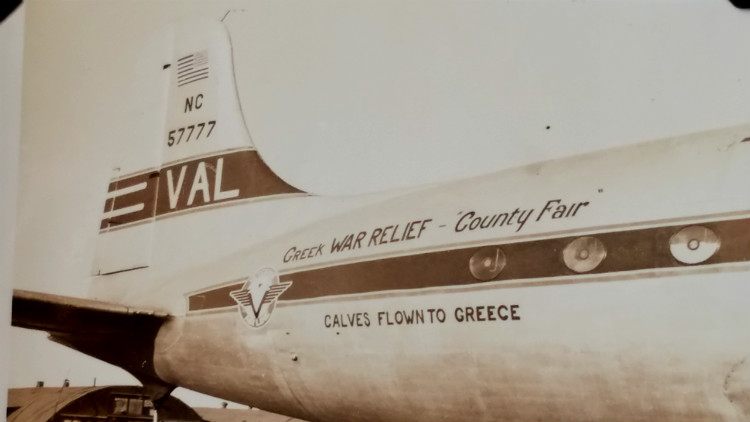
UNRRA CONTRACT
Crew gumption. Skills. Teamwork. And each flight a success.
UNRRA. United Nations Relief and Rehabilitation Administration
The UNRRA contract carried unique, sizable challenges for the entire Company – Management, Mechanics, Flight Planners and Crews. Without a hitch, their first DC-4 (converted from an ex-Army C-54) was outfitted for and successfully completed five transatlantic war relief cargo flights to Prague and Warsaw between mid-April and early-June 1946. Each crossing required exceptionally narrow-range regulated temperature control, both airborne and on the ground, for tons (literally) of hatching eggs. The sixth flight was in August 1946, to Athens, the maiden voyage for the Company’s second DC-4, transporting young dairy breeding stock donated by The Borden Company. It, too, demanded temperature regulation and finesse on the flight controls.
“Experimental” DC-4 expedited for UNRRA war relief flights
1946 Manifests of UNRRA Crews
M. Frome. 1946 Navigator. Washington Post writer.
1st Prague crew returns. 23 April 1946. UNRRA
1946 film of UNRRA Prague crew arrival
2nd Prague Crew departs for home. 2 May 1946 UNRRA
Russia demands 1946 Warsaw overflight permit
1st Warsaw UNRRA war relief flight makes history
2nd-ever civilian flight to Warsaw. 20 May 1946.
2nd UNRRA flight departs for Warsaw 20 May 1946
1946 Warsaw 5-Part series by Michael Frome
#3 Prague trip. Radio loss forces Portland landing
Growing a 1946 non-sked airline
Warsaw May 1946. UNRRA relief story lists Crew names Walker and Fagan
John Noll narrates his 1946 film. Details Warsaw overflight permit.
1946 Greek War Relief flight makes history
17 year old “flys” baby cows to Greece
Edward F Martz Jr. International UNRRA Navigator
1945 Crew list grows from 22 to 62
2016 Prague trip to research 1946 UNRRA flight
Research path to Navigator, Conservationist Frome.
Michael Frome. Non-sked Navigator and Will’s “Pop”
New information invaluable to 2017 research as 1946 images and clippings surface
1946 Veterans Air Crew Manifests for UNRRA War-Relief Flights
CREWS
Nothing happened without the Crews. From the ground up.
CREWS
When a DC-3 interior needed conversion from cargo to “luxury” passenger, Crews did it. When a DC-4 retired from military livery to “civvies,” Crews did it. When 55,000 UNRRA hatching eggs relied on consistent cargo-hold temperatures to survive transatlantic transport, Crews made it happen. When a bomb-crater-patched Warsaw runway demanded barnstormer skills and finesse on the controls, the cockpit Crew met the challenge.
KY journalist covers people, plans, glider, turkeys.
Stettner logbook verifies 1946 non-sked history.
1946 Manifests of UNRRA Crews
1946 film of UNRRA Prague crew arrival
1st Warsaw UNRRA war relief flight makes history
#3 Prague trip. Radio loss forces Portland landing
The whole story. Air line ticket-selling romance.
Bernard Shmanske. DC-3 pilot and stockholder
Broughton, Martz, Cowart: Breaking News
Thomas E Cowart. International Flight Engineer. Walker Recruit.
Edward F Martz Jr. International UNRRA Navigator
Robert C. Chambers early DC-3 Chief Pilot.
1945 Crew list grows from 22 to 62
Gaye Lyn crashes VFW meeting seeking Veterans Air vets
2016 Prague trip to research 1946 UNRRA flight
Met Robert Chambers son, Bruce. 25 May 2016
Veterans Air DC-3 pilot John Schaus
Research path to Navigator, Conservationist Frome.
Veterans Air Express research precarious
Researching for 1945 crews or their families
2017 Road Trip. Family Visits. Day One
John Noll aviator at 20+ and 70+
1945 Stettner connection sparks daughters’ friendship in 2017
2017 laughter-filled daughters of 1946 DC-4 Flight Engineer.
AIRCRAFT
The U.S. Government had a WWII surplus aircraft disposal program.
AIRCRAFT
With the Government aircraft disposal program, over a period of months, Veterans procured five war birds at “attractive” pricing. They had been granted a chattel mortgage, not purchased. And the aircraft all required painting, outfitting and various degrees of maintenance prior to entering service.
Three DC-3s flew domestic cargo and passengers. Two DC-4s flew international cargo.
Stettner logbook verifies 1946 non-sked history.
Florida ideal secondary maintenance location
“Experimental” DC-4 expedited for UNRRA war relief flights
15 May 1946. Bill of Sale for DC-3, N86583
2nd UNRRA flight departs for Warsaw 20 May 1946
DC-4 converted at Sebring FL ops base
Carole Landis christens non-sked DC-4. July1946
DC-3 Gaye Lyn joins ABCDlist.nl Gallery of DC-3s
1946 Greek War Relief flight makes history
Facts “known” at odds with other “Facts”
Journal to my Dad on Father’s Day 2015.
Robert C. Chambers early DC-3 Chief Pilot.
DC-3 operation documents deliver insight
Carvair ATL-98 sister ships
DC-3s ferried from Valdosta in 1945
Background story. WWII aircraft production miracles.
ROUTES
The audacious dreamers had a plan.
ROUTES
Witness the “Routes” filed with the CAB. They accompanied applications for “permanent certificates of public convenience and necessity.” Meanwhile, the DC-3s flew cargo – fresh produce, live Maine lobsters, flowers, medical supplies. “Snowbirds” made trips from Newark to Miami. Summer vacationers flew to Cape Cod. And there were other routes only partially garnered from Veterans Crew logbooks. Flight records remain scarce.
Fly anything to anybody from anywhere. The 1945 plan.
Glider on the horizon
Florida & Cape Cod by Air in 1946
1946 Manifests of UNRRA Crews
Growing a 1946 non-sked airline
John Noll narrates his 1946 film. Details Warsaw overflight permit.
1946 Greek War Relief flight makes history
Broughton, Martz, Cowart: Breaking News
Schaus finds post-WWII employer again after 70 years
1945 Non-sked garners storytelling invites
KQNA live radio interview promotes upcoming ERAU presentation
3-part video by ERAU students features unfolding history
Interview Videos 2 and 3 join non-sked history.
LEGALITIES
First the U. S. Government giveth and then taketh away.
LEGALITIES
It’s a fair statement. From the start, the CAB restricted Veterans Air (and all other non-skeds) from flying regular routes. Thus the name Non-skeds. When the Non-skeds became unexpectedly successful, it scared the major airlines and the Government. For Veterans Air, timing, growth plans, under-funding, and the Non-sked regulations triggered the “taketh away.”

